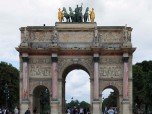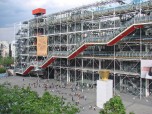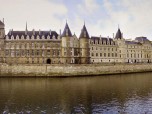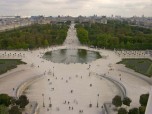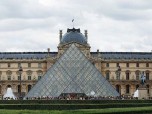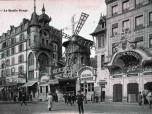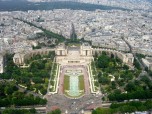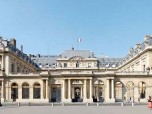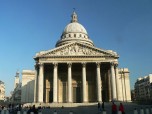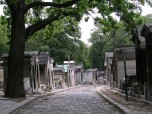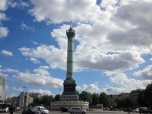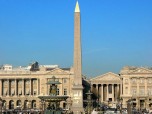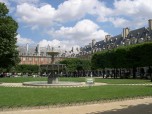The origin of Place de la Concorde in Paris, France was a statue of the French King Louis XV. The equestrian statue, designed by the sculptor, Edme Bouchardon, was started in 1748 and completed in 1763. The famous eighteenth century French architect Ange-Jacques Gabriel did the planning for Place de la Concorde, which was completed in 1772. Originally named “Place Louis XV” to honor the King, it became known as Place de la Concorde after the French Revolution.
History and Design
The statue and the square that housed it were built for a number of reasons. The King, who had suffered a serious illness, recovered, and the statue was a celebration of his recovery. Around this same time, many prestigious squares had been completed, or at least started, in several French cities. At the time of its construction, the Champs -Elysees was already there, separated from the Tuileries Gardens by a wasteland of sorts. Upon completion, the Place de la Concorde was an octagonal plaza with a small stone pavilion in each of its eight corners. Gabriel’s talents as an urban planner were evident in the design of Place de la Concorde as he brought together a variety of designs in an attractive outdoor harmony.
A dry moat surrounded the octagonal plaza, and bridges were used to cross the moat on foot. Eight massive sentry boxes were spaced around the moat. Today, they are the base of the eight statues that represent eight major French cities. The moat was also surrounded and protected by a stone balustrade. Other ornamental statues and gardens with beautiful lawns and trees and flowers highlighted the Place Louis XV. The Tuileries Gardens and the Champs-Elysees were now brought together through a well designed arrangement.
Place de la Revolution
By 1792, Place Louis XV was dubbed the Place de la Revolution. Instead of a royal statue, the guillotine took center stage. The reign of terror had begun, and near the Tuileries Gardens railings, nobility were beheaded one by one, with Marie-Antoinette and Robespierre among them. Louis XVI was the first of the nobility to be executed. The most active time of the guillotine in the Place de la Revolution was during the summer of 1794, the time known as the reign of terror. Over 1,000 people were executed in one month’s time that summer. From March, 1793 to July, 1794, around 4,000 total were executed during this horrific time.
Place de la Concorde
This new name was a gesture of reconciliation after the dreadful reign of terror was over. Stones from the demolished Bastille built the bridge across the river. Under Louis-Philippe, the architect Jacques Hittorff completed the transformation of the square. At the center of the Place de la Concorde is the Obelisk of Luxor. It was a gift from Egypt, and is the oldest monument in Paris. From the temple of Ramses II, it stands over 70 feet high and weights over 200 tons. Although it was given as a gift to Charles X in 1829, Louis-Philippe thought it would be an appropriate non-political monument for the people of France. Still standing today are the twin tall buildings built by Gabriel in 1775 that rise up on the North side of the Plaza. The moats were also filled by Hittorff. He then added two monumental fountains and basins, reminiscent of St. Peter’s Square in Rome.
With so much history behind it, Place de la Concorde offers much for visitors to view and study. Spanning several decades of change in France, it is a grim reminder of darkness, as well as a point of hope for change.


